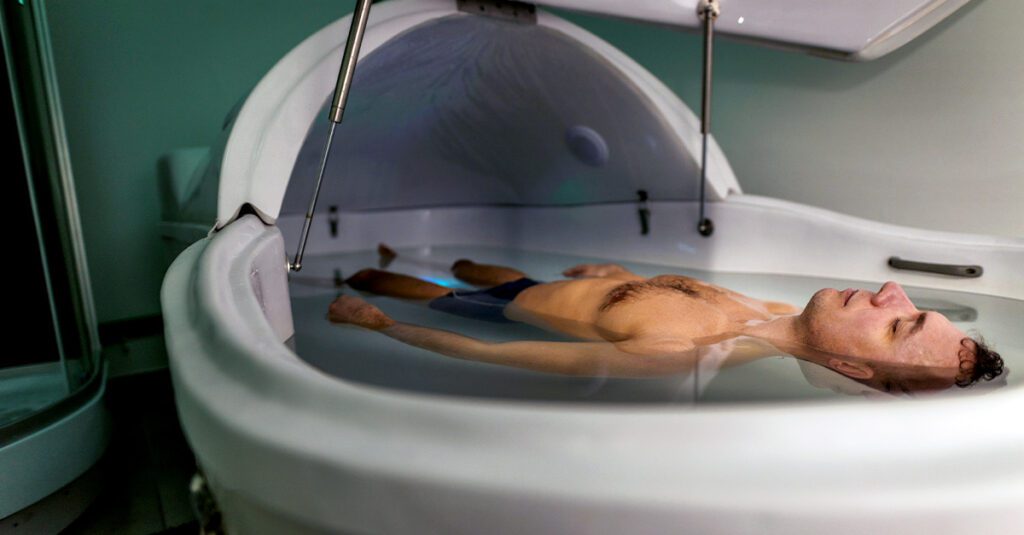Float Tanks: Everything You Need to Know about a Float
If you’re like most people, you’re intrigued by the idea of float tanks, also known as sensory deprivation tanks, but you’ve never taken the plunge. For some, the idea of floating may seem daunting or scary, but the reality is much more meditative and relaxing – with documented physical, psychological, and emotional benefits. Floating can even be considered a type of self-care, especially when used in complement with other treatments and therapies. Here’s a brief primer to prepare you for your first float.
Float Tanks: A Mind-Body Treatment Devised by a Physician
First created in the 1950s by physician and neuroscientist John C Lilly, float tanks are designed to restrict external stimuli. Light-proof and sound-proof, they’re filled with about a foot of salt-saturated water heated to skin temperature. The high degree of salt in the water – comparable to the Dead Sea – promotes buoyancy, making it easier to float in a relaxed state.
By cutting you off from external stimulation, float sessions help you silence your “mental chatter” and allow your brain and body to focus on deeper sensations, thoughts, and connections. When this happens, your heart rate slows, your breathing deepens, and your body relaxes completely. For many, a float session is a chance to reconnect with yourself.
Benefits: From Improved Focus to Rapid Training Recovery
There are numerous documented effects and benefits of float sessions, although these can vary widely depending on the individual. Many people report feeling increased focus, concentration, and creativity; there is also some evidence that float sessions may help manage anxiety and promote feelings of positivity and wellbeing. Float sessions also allow some floaters to reach a deeper state of meditation or inner peace.
When it comes to physical benefits, float tanks also show promise in helping manage pain, especially pain associated with tension; they may also promote improved sleep. Some athletes report more rapid physical and psychological recovery after a training session.
What to Know Before Your First Float Session
Preparing for your first float session is simple. Have a light snack and avoid caffeine, a stimulant, leading up to your session. Because the saltwater in the tank may irritate cuts or grazes, Vaseline can be used to cover any cuts. Avoid shaving or waxing prior to a session; those with skin conditions may want to check whether a float session might irritate their skin.
Float sessions are usually conducted naked to minimize the sensation caused by clothing, and you’ll be asked to shower before your session. Once in the tank, lights and music will play for a few minutes as you acclimate; these will also return a few minutes before the end of your session.
Sessions usually last an hour. If you begin to feel uncomfortable in the tank, you’re welcome to cut your session short. After your float, allow some time to decompress before returning to your day, as the transition from floating to work can be jarring for some. This can be a good time to journal, read, relax, or book in for a massage.
Arrange a Float at Optimum Human
If you’re considering a float, visit us at the newly opened Optimum Human Performance, a state-of-the-art facility that incorporates float tanks as part of a wide-ranging suite of wellness amenities. We look forward to seeing you!

